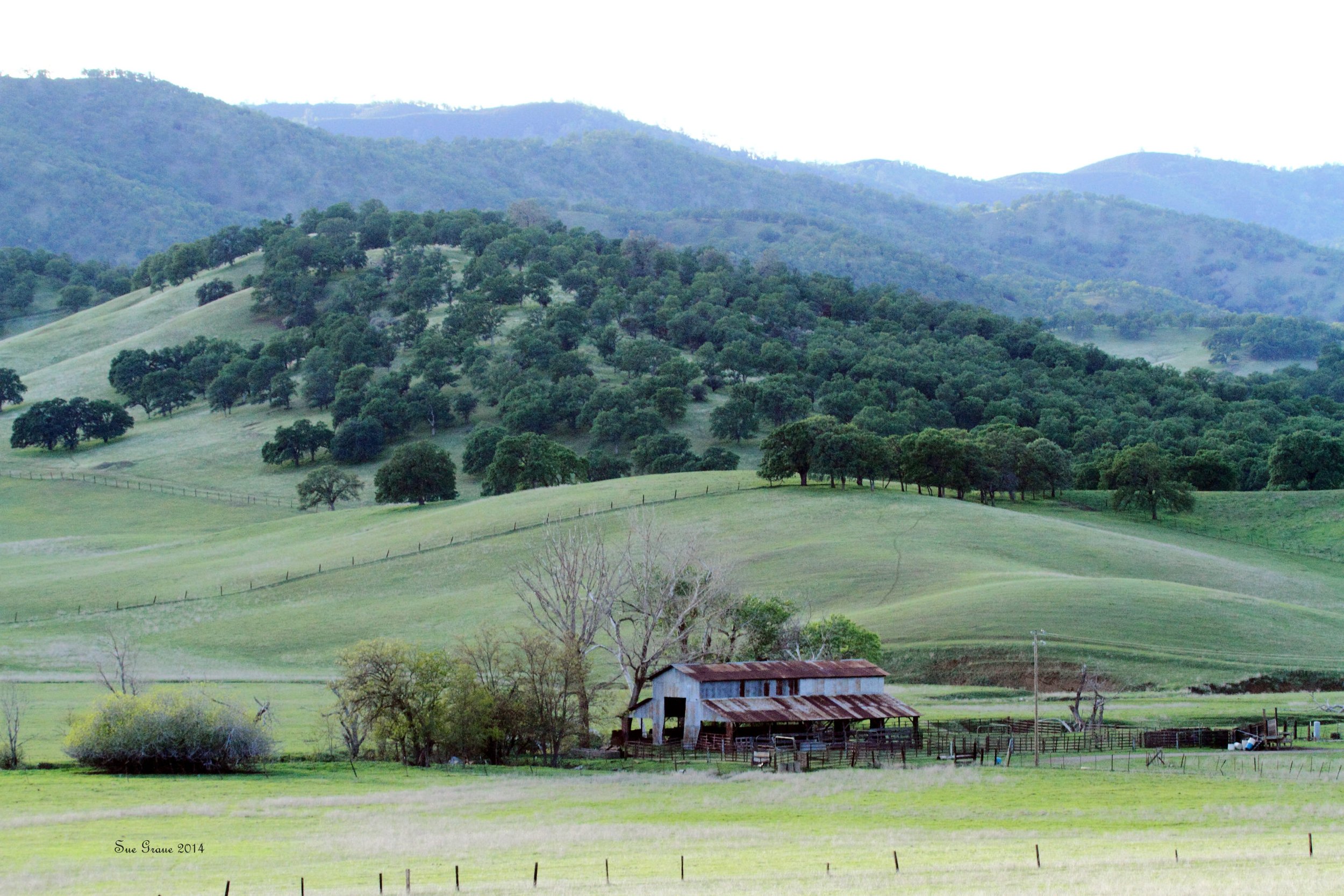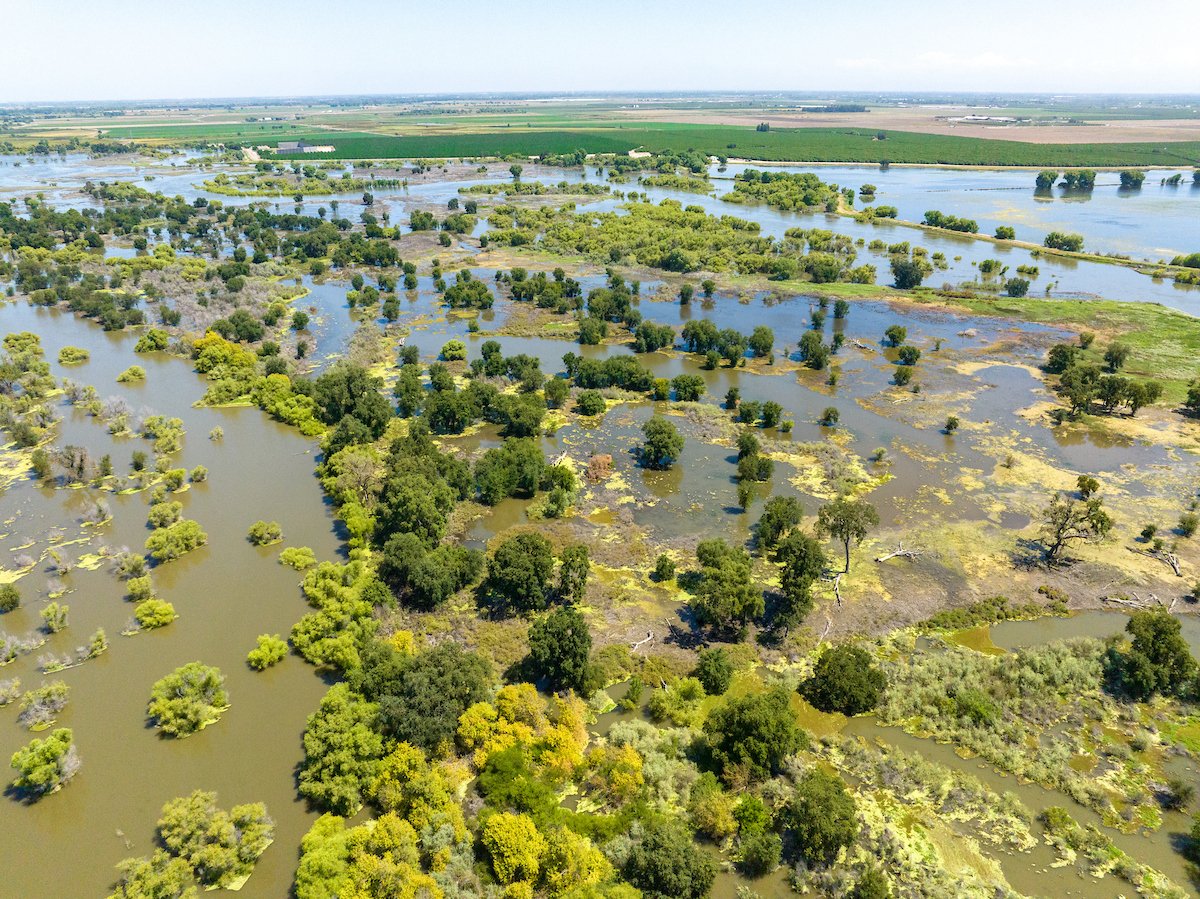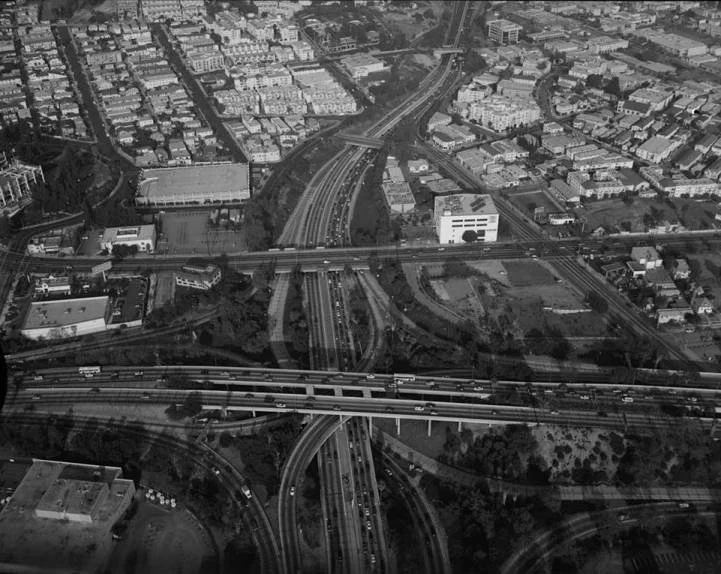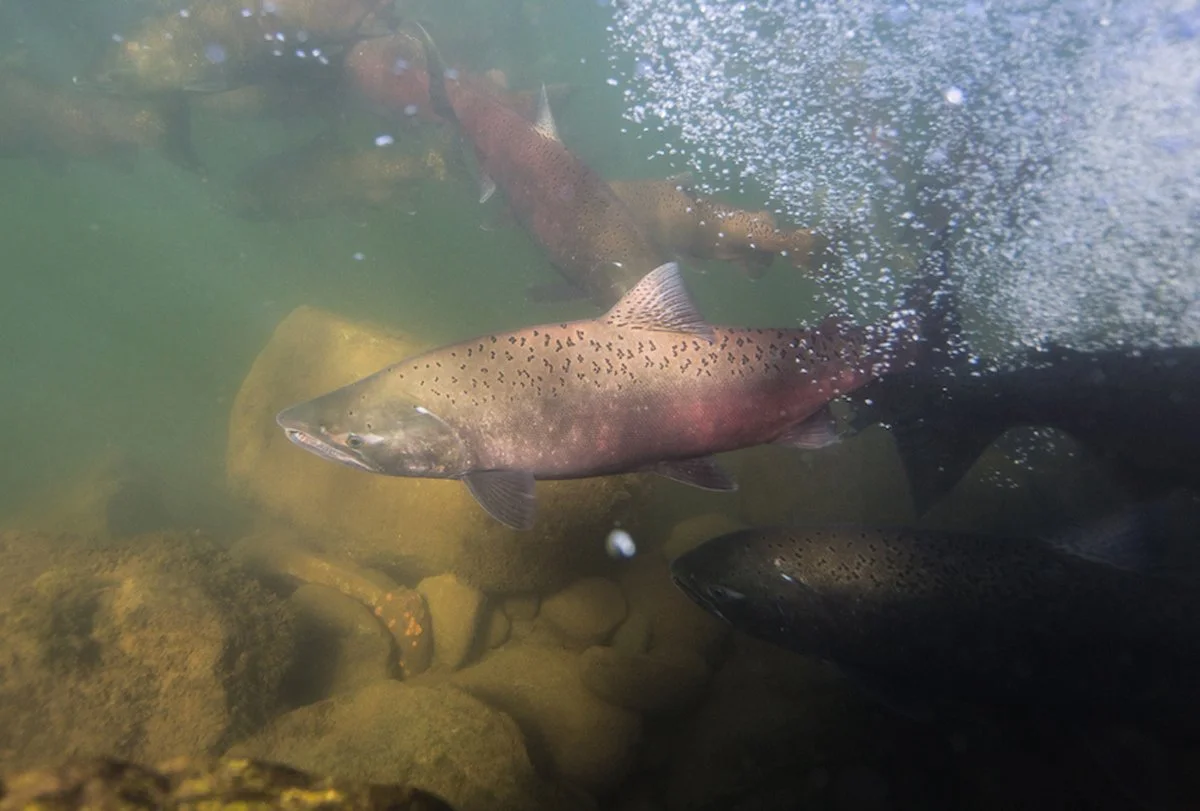Editorial: Sites Reservoir is Not a Silver Bullet. Here’s Why.
The proposed location of Sites Reservoir consists of thousands of acres of contiguous habitat and historic range lands. Credit: Sue Graue, 2014.
California is at yet another critical point in its struggle toward a sustainable water future, and yet we’re still talking about the wrong solutions.
Sites Reservoir is the latest in a long line of proposed dams that promise to end our cycle of water insecurity. However, Sites will add very little to California’s water portfolio, and its harm to the Sacramento River, Delta ecosystem, and communities that rely on them will be irreversible and ongoing.
The project currently awaits a water rights decision by the State Water Resources Control Board, which will come after a period of negotiations and a formal water rights hearing. We will either build one of the biggest boondoggles in California history or we will dodge this expensive bullet and move toward reasonable answers to solving our water crisis.
Flood waters replenish the San Joaquin River National Wildlife Refuge in June 2023. Credit: CA Dept. of Water Resources.
Many lamented during this unusually wet year that water was “wasted to sea” – and that more dams could have captured enough water to solve California’s ongoing water uncertainty. However, water that flows to sea is essential for many uses, including salinity control for farming, wastewater treatment, and endangered species support, and sediment transport to replenish beaches and marshes. The water that flows to sea, quite literally, works for us. If the Delta ceased to deposit water into the San Francisco Bay, ocean water would further flow into the Delta, making the Delta’s water unusable for farming, and toxic for the wildlife that depends upon it.
SITES WILL ADD LITTLE TO WATER SUPPLY
If constructed, Sites Reservoir would only expand overall water availability in California by less than 1% in an average good year. During long drought spells, it would sit useless and not improve the dire conditions in the Delta.
Proponents’ own best estimates demonstrate that Sites would provide approximately 276,000 acre-feet annually - enough water for just 3.9% of California’s almonds (which have more than doubled in acreage over the last 20 years), or just 4% of urban water use. For such a small yield, beneficiaries would spend billions of taxpayer dollars, while a majority of project benefits are privatized.
We cannot continue to cling to this outdated way of thinking about water
SITES IS BAD FOR THE ENVIRONMENT
Despite the empty promises that Sites will deliver environmental benefits, many conservation groups have united in opposition to Sites Reservoir for one simple reason: taking more water from rivers will damage aquatic ecosystems, and will not create environmental benefits.
The California Water Commission granted $875 million in Prop 1 (2014) funding to Sites Reservoir for “monetized public benefits.” The supposed environmental benefits are:
Water supply to refuges – which the government is already legally obligated to provide.
Flows through the Yolo Bypass – with unsubstantiated claims of increasing the Delta smelt’s food supply.
The Commission, however, denied funding for a host of other benefits for which proponents applied. In fact, the California Department of Fish and Wildlife critiqued many of these purported benefits, with a series of rebuttals of the purported benefits to salmonids. FOR Board Member Ashley Overhouse has poignantly stated, “It makes no sense to take water from one imperiled species, give it to another, and call it a benefit.”
A drone close-up of a harmful algal bloom in San Luis Reservoir in August 2021, when the reservoir was at 18% total capacity. The proposed Sites Reservoir, like San Luis, is an off stream reservoir which is likely to experience similar conditions. Credit: CA Dept. of Water Resources.
A small number of conservation organization have supported Sites because it could hypothetically provide water for migratory birds which are suffering from the near-elimination of wetlands in the Central Valley. There is no doubt that the state must provide more resources to restore wetlands and incentivize rice farming, which is excellent substitute habitat for migratory waterfowl.
Unfortunately, Sites has no operational plan or other assurances to guarantee such benefits will materialize. The same state, federal, and local agencies responsible for the decline of freshwater ecosystems and species in California now ask the public to believe that one more dam will turn it all around. If anything, historical negligence by these agencies is a testament to the fact that a project approval on the basis of trust will surely fail the environment, marginalized communities, and Californians at large.
Other impacts from Sites would span from the reservoir location, to the Sacramento River, and through the Delta and Bay. These include (1) increased mercury levels in the Sacramento River and fish that inhabit it, (2) increased harmful algal blooms which have been documented to kill fish and marine mammals in massive die offs, and to have serious human health consequences, and (3) fragmented and destroyed wildlife habitat, wetlands, and riparian habitat in the project area and throughout the Sacramento River and Bay-Delta.
As the state strives to meet its lofty climate goals, Sites Reservoir emissions would be like adding 80,000 gasoline-powered vehicles back onto the road each year. This image depicts the Four Level Interchange in central Los Angeles. Credit: CalTrans.
Sites Reservoir will also be a major greenhouse gas emitter. A recent analysis using the cutting-edge All-Res Modeling Tool has estimated that Sites would emit 362,000 metric tons of carbon dioxide equivalent (CO2e) per year. That amount is equal to more than 80,000 gasoline-powered passenger vehicles driving each year. It is also more than 14 times greater than the EPA’s greenhouse reporting threshold for some major emitters. Much of these emissions would be as methane, which is 25 times more potent than carbon dioxide. As California works furiously to achieve net zero emissions by 2045, this project directly competes against the state’s ambitious climate goals.
Project supporters have gladly spun the narrative that Sites would simply skim water off the top during unusually wet years, however, this is patently untrue. With a maximum pumping capacity of 4,200 cubic feet per second and a 1.5 million acre-foot storage capacity, it would take nearly 6 months of pumping at full power to fill the reservoir. In some years, this could take 30% or more of the flows from the upper Sacramento River alone. Further, the Sites Authority plans to pump even in years classified as Dry and Critically Dry – when that water is needed most by ecosystems and disadvantaged communities.
SITES IS NOT AN EQUITABLE SOLUTION
The Sites project is deeply inequitable – both economically and sociologically.
Chinook salmon, which are at historic lows, are culturally significant to many California tribes. Credit: CA Dept. of Water Resources.
The Sites project will create some of the most expensive water in the state, and will thus tend to push costs for water higher generally, making water less accessible to disadvantaged communities, and those facing water insecurity. Project benefits will be reserved for the small handful of Californians who can afford to pay for a relatively miniscule amount of uncertain, expensive, but potentially profitable water. Proponents claim that Sites is a “beneficiary pays” project. However, the project investors admit in their water rights application that they plan to scalp the water for profit during times of extreme need, to recuperate costs.
Sites harms those who rely on rivers and fish for their livelihoods, sustenance, or enjoyment. This includes tribal communities whose connection to these resources are also cultural and religious. Further, Sites represents the continuation of unjust water management in the state – a system that was specifically designed to exclude tribes and people of color. Not only have these groups not been made whole in a broad sense, but they have also not been adequately included in the development of this project.
ALTERNATIVES
Friends of the River is committed to creating a secure and sustainable water future in California. However, as Ron Stork, FOR’s Senior Policy Advocate of 36 years, often notes, “California can’t dam its way to paradise anymore – all the juicy spots are taken, and additional dams yield marginal returns.” He calls it cruel arithmetic.
Lady Phacelia in the Sites Reservoir region. Native to the American Southwest, this plant is known for attracting pollinators. Credit: Greg Kareofelas.
FOR instead supports a suite of alternatives to dams — holistic reforms to individual, corporate, and agricultural water use, while incentivizing less water-intensive crops, improving water management and efficiency, and recycling the approximately 400 billion gallons of treated water discarded into the Pacific Ocean annually. FOR also supports groundwater recharge and demand management.
California has been locked in a century-long pattern. We use more water than we have, and the oft-proposed solutions sacrifice more of our natural habitat and waterways to quench an agricultural thirst that far outpaces capacity. At some point, we must accept that conservation is now cheaper and more equitable than more dams. Holistic approaches to California water management might not be as flashy as Sites Reservoir, but they are almost certainly less expensive, less harmful to imperiled species and ecosystems, and more equitable.
FOR TAKES ACTION
On August 31, Friends of the River and the California Sportfishing Protection Alliance, along with a coalition of environmental groups, submitted a formal protest against the Sites Reservoir water rights application. FOR will continue to build this coalition, and ramp up efforts for the water rights hearing. FOR will also continue to communicate the truth about this harmful project wherever possible, and to further develop strategies to stop this boondoggle.
Most water years of the future will not be as generous as the 2022-2023 water year. Failing to acknowledge that is a form of climate denial. California must realistically evaluate how much water will be available in a shifting climate, and allocate it in an equitable way, while preserving environmental and economic values for generations to come.
Californians need enduring solutions, not more empty dams.
Resources
Read the fully-cited version of this editorial HERE.






